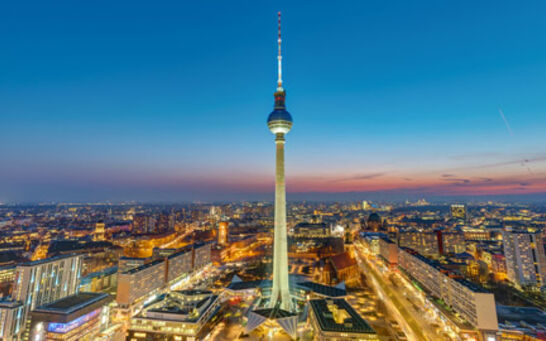Inflation 2022: Is now a good time to invest in gold?
Gold facts & figures 20.01.2022
How inflation happens, in what ways gold has proven a protection against inflation and determining the right time to start investing.
 Over the past months, we have all seen the effects of rising inflation – be it at the petrol station, the supermarket or on our energy and heating bill. And while the value of money is declining, cash savings are not yielding interest and we are being charged penalty interest for higher deposits. Against this backdrop, economists who had classified the high inflation as a short-term phenomenon have fallen silent. Driven by the Coronavirus pandemic, it could well outlast 2022.
Over the past months, we have all seen the effects of rising inflation – be it at the petrol station, the supermarket or on our energy and heating bill. And while the value of money is declining, cash savings are not yielding interest and we are being charged penalty interest for higher deposits. Against this backdrop, economists who had classified the high inflation as a short-term phenomenon have fallen silent. Driven by the Coronavirus pandemic, it could well outlast 2022.
We are therefore discussing the question of whether gold, as an asset that has stood the test of time for millennia, can protect investors from inflation. Is it a worthwhile investment in the current environment, even though its price remains comparatively high, after last year’s cooling and the fact that gold has thus far reacted little to inflation?
Defining inflation, deflation and price stability
Inflation is a general increase in the price level, not the price increase of individual products. If inflation lasts longer, money loses value – i.e. purchasing power. Deflation, on the other hand (a rare phenomenon compared to inflation) refers to exactly the opposite: the persistent decline in the general price level. Disflation is a slowing but persisting inflation (a decrease in the rate of increase of the general price level, e.g. from 3 to 2 per cent).
Price stability is the primary objective of the monetary policy of central banks such as the ECB and the national central banks affiliated through the Eurosystem, such as Deutsche Bundesbank (the German Central Bank). Price stability is achieved when the purchasing power of a currency remains largely constant; individual products or services may become more or less expensive while the general price level does not significantly change.
Since deflation is more difficult to control than inflation in terms of monetary policy, the ECB tolerates a slight inflation of up to two per cent per year. It is currently significantly higher. An effective monetary policy measure to curb inflation would be key interest rate hikes, as announced by the US Federal Reserve (Fed) for 2022. The problem: interest rate hikes not only counteract currency devaluation; they also make loans more expensive for companies, which dampens investment activity and generally slows down or even stifles the economy.
Short- and long-term factors influencing inflation
 In the long run, it is above all the development of the money supply (the total stock of money held by non-banks in a country or a monetary union) which heavily influences inflation. If the money supply grows disproportionately to economic output, this can lead to persistent inflation.
In the long run, it is above all the development of the money supply (the total stock of money held by non-banks in a country or a monetary union) which heavily influences inflation. If the money supply grows disproportionately to economic output, this can lead to persistent inflation.
In the short term, other factors are decisive. On the one hand, a price increase can result from an increased demand for certain products, especially if demand exceeds supply. This creates price pressure, which leads to demand-induced inflation. Price increases can also occur on the supply side, when the cost of production of products or service supply rises, which may be due to rising costs of energy, raw material or labour, so-called supply-induced inflation. We speak of imported inflation if the price increases happen in products or commodities from abroad, such as oil.
The current inflation, particularly noticeable in the US and some European countries such as Germany, is a combination of supply-induced inflation and money supply expansion. On the one hand, governments issued loans on a large scale as well as non-repayable financial aid in order to protect companies from liquidity shortages and insolvency during the lockdown phases of the pandemic. These measures, however, reinforced the consequences of the loose monetary policy introduced by many central banks in the aftermath of the financial crisis of 2008/2009, including negative interest rates.
After their respective phases of lockdown, the economies of different countries did not pick up simultaneously, resulting in price-driving phenomena ranging from a lack of raw materials to production shortages of important intermediate products such as memory chips, as well as logistical issues due to a shortage of skilled workers. These developments cumulated in supply-induced inflation. The rainy summer across large parts of Europe also entailed below-average harvests in 2021, reflected in higher food and feed prices.
Significant increases in energy, production and transport costs have tickled down to consumers. In Germany, we are now seeing the highest inflation rates in almost 30 years.
How is inflation measured?
A quantitative variable, the inflation rate is determined by comparing the previous year’s prices with the current price situation. To measure how the price increases of many products affect consumers in Germany as precisely as possible, the Statistisches Bundesamt (the Federal Statistical Office) determines a basket of goods that includes the most important products and services, rent and other household expenses. This selection is continuously updated to take into account social, economic and technological developments. Products and services within this basket of goods are weighted according to their share of a household’s total expenditure to reflect as accurately as possible the real financial burden of each item. The CPI (consumer price index) is calculated based on monthly surveys of the prices of the products and services within the basket, allowing for a prompt recording of price changes.
Quality changes are also taken into account. They can be considerable over time, especially in communication electronics and computers, most palpable in the rapid development of mobile communication.
To measure the inflation rate within monetary unions like the EU, the HICP (harmonised indices of consumer prices) is also calculated monthly. Derived by each euro state from the respective national CPI using jointly agreed methods, the results of the individual countries can be compared with each other.
The gold price in previous times of inflation and crisis
With the entry into force of the Bretton Woods Agreement, the successor to the Gold Standard, the gold rate was fixed at 35 US$ per ounce in 1944. With the end of the Bretton Woods system in 1973, the gold price was de-pegged from the US dollar and quickly rose to US$107. As the result of the oil embargo imposed by OPEC during the so-called Yom Kippur War, the end of 1973 also saw the first worldwide oil crisis which led to high inflation rates across industrialised countries. The Fed initially reacted cautiously, but during the second oil crisis in 1979/1980, triggered by the Islamic Revolution and the subsequent Gulf War, it countered the US inflation rate, which had risen to 15 per cent, by raising the key interest rate to 20 per cent. The gold price had slackened after a sharp rise during the first oil crisis. In early 1980, it rose to a new record high of 850 US$ per ounce.
After inflation rates dropped back to a low level, the gold price followed suit, reaching its lowest point in March 2001 at only 256 US$ per ounce. The appeal of the stock markets had driven investors into a general euphoria with the prospect of quick profits and gold lost much of its lustre.
Until 2021, there have since been no major periods of inflation in the US and most EU countries, a fact that did not stop the gold price from rising to an all-time high of over 2,000 US$ per ounce in August 2020. The gold price tends to rise in phases of inflation and crisis. It reached US$1,900 in August 2011 during the global financial crisis. In view of the numerous geopolitical crises such as Brexit, the US/Chinese trade war, etc., the precious metal was in rally mode since the end of 2018, a phase that lasted until mid-2020 due to the Coronavirus pandemic.
After the aforementioned all-time high, gold settled at around 1,800 US$ per ounce in 2021. During both the financial crisis and the geopolitical crises since 2018, the US and other industrialised nations did not experience strong inflation, which suggests that gold is valued by investors not only as a hedge against inflation, but as a safe haven in general.
Gold investments as protection against inflation?
According to calculations by the asset management company Flossbach von Storch, gold has outperformed the average inflation rate in the US by 2 per cent since the end of 1973, when the free market price was US$107, with an average price increase of 6.1 per cent until the end of 2021, thus proving itself as a long-term store of value and inflation protection.
There are a variety of ways for investors to protect their money against inflation through a gold investment. A direct investment in physical gold represents the ultimate security in the event of the collapse of the financial systems, but it is also the most expensive way to invest in gold. With a daily trading volume of around US$170 billion worldwide, the gold market is one of the most liquid markets in the world with guaranteed narrow trading margins. Wholesale and institutional investors are the main beneficiaries. For private investors, the acquisition of gold bars or coins from a jeweller or bank, however, involves relatively high trading margins, and the safe storage of the precious metal also generates costs.
The purchase of highly liquid securities that track the performance of the gold price is much more cost-effective. So-called gold ETCs (exchange-traded commodities) in particular offer a high degree of investment security, provided they are 100 per cent backed by physical gold.
Some gold ETCs, such as Xetra-Gold, also securitise a delivery of physical gold in the value of the ETC investment amount at any time. The investor thus has the advantages of exchange-trading gold at low cost as well as the option of accessing the physical gold, held in safe custody to back the security, at any time.
When is the right time to invest in gold?
As reliable as gold is as a store of value in the long term, the gold price is often volatile in the short term. Due to its dual function as a scarce commodity and store of value, the development of the gold price depends on a significantly higher number of factors than does, for example, stock performance.
Gold may thus disappoint in the short term as an investment protection. A rising inflation rate definitely boosts the demand for gold, but other factors can negatively impact the gold price. A very recent example is Turkey, where the monthly inflation rate in 2021 ranged between 15 and 36 per cent.
So, when is the right time to invest in gold? The answer is: always – provided you’re in it for the long run. Incidentally, gold has a positive overall effect on a portfolio. Even a gold addition of just five per cent can improve the risk-adjusted performance of a typical stock/bond portfolio, factoring in an assumed crisis probability of 15 per cent. And in view of inflation, the ongoing Coronavirus pandemic and the existing geopolitical conflict potential – the Russian threat to Ukraine, China’s claiming Taiwan as its own territory – that is a rather conservative estimate, at least for 2022.
Arnulf Hinkel
Financial journalist
Xetra-Gold Hotline

Do you have questions? We have the answers. Contact us here: 9 a.m.–6 p.m. CET
xetra-gold(at)deutsche-boerse.com
For press inquiries: media-relations(at)deutsche-boerse.com




